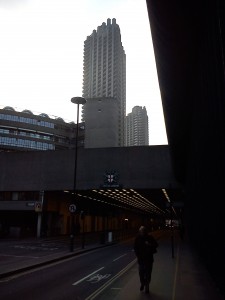Natalie Bennett takes a look at the needs of communities and developers.
 When I look back at my personal blog I find that it is five years now since I did the first, and so far my only, leg of the Garden of England cycle route, but having now read Owen Hatherley’s A Guide to the New Ruins of Great Britain
When I look back at my personal blog I find that it is five years now since I did the first, and so far my only, leg of the Garden of England cycle route, but having now read Owen Hatherley’s A Guide to the New Ruins of Great Britain, which I’ve reviewed elsewhere, I now understand some of what I saw much better.
It’s an area Hatherley clearly knows well. He notes that the MP for Greenwich and Woolwich, Nick Raynsford, has an office on the street where Hatherley lives, “a street where a few years ago, there was a post office, a general hospital and a primary school. Now all of these have gone, but it does have three blocks of tiny, speculative ‘luxury’ flats, one of which is a gated community.”
For as Hatherley explains throughout the book, the Labour government was desperately keen on creating “mixed” comunities, by which it didn’t mean building enough council housing so that a wide range of people could use it, but rather mixed tenure.
Hatherley’s perspective is a mixture of the architectural and the political – he’s horrified by the way this plan has destroyed perfectly decent homes that only needed maintenance and attention, and replaced them with the Pseudomodernist horrors of pointlessly weird roofs, “vernacular” brickwork and plastic panels of preschooler-friendly colours (if you live in London you’ve probably got one down the road from you) – not to mention “luxury” flats of mean and pinched proportions. (I’ve seen “double bedrooms eight foot by seven, in which you can indeed get a double bed, if nothing else.)
But he also sees the political problems – the way that huge amounts of government funds have gone to developers’ pockets, while relatively poor people have been left between two hells – negative equity and a life of mortgage drudgery, or the untender mercy of private landlords.
On this journey I cycled through Thamesmead, and I have to admit my cursory impression was less than favourable – the Brutalist concrete doesn’t seem to me a great look, although as Hathersley points out, when pointing to its failure no one ever seems to note the undoubted popularity of the equally gray Barbican. Here there’s flats on stilts with the parking underneath – certainly a rather raw look, but as Hathersley points out, perfectly sensible for a floodplain, unlike much of the newer building.
Still it’s the concrete walkways around Tavy bridge that seem most foreign and alienating here, but as the author points out, these were not meant to stand alone. Similar private housing was meant to be built, “but the backlash against Modernism led to the later phases being constructed first in council house vernacular (often snapped up with right-to-buy), second in Barrat Homes neo-whatever, which never had any pretensions to being public housing, and third in the tacky new build brownfield aesthetic of the Brown boom.”
He contrasts this, as many do, with the Millennium Village. Reached by the “notoriously infrequent” 129 bus from Greenwich, and cut off from the surrounding housing, although well connected to Canary Wharf, he notes there’s token “key worker” housing, but no council, and this is in middle class enclave, by no means “mixed”. “At its centre is the amusingly named Oval Square, the obligatory piazza, ostentatiously lacking any facilities other than an estate agent, not that it matters, as there are two huge strip malls with huge car parks just around the corner (and did I mention that this is a ‘sustainable community’?)”
A little further down river, at Royal Artillery Quays – where Hatherley also has a picture of the metal humans, what he labels a “Gormleyism” – he notes the “old-school Modernist” nature of the white, barely relieved structures, and how “a 2009 BBC story about the impact of the credit crunch on the area … they were tellingly described as ‘tower blocks’ rather than a ‘stunning development'” (as he nots, developers everywhere description of choice).
I don’t think when I went past, however, that The Pinnacles were finished. Though it seems they are now. “These inexplicably named stubby blocks were the epicentre of the London property crash. In one block, 82 out of 84 flats were repossessed, and the development is apparently riddled with vermin.”
This is London – although I admit when I got to Erith, where Hatherley doesn’t go, I felt a very, very long way away. But somehow it seems that a lot of the worst of Blair’s Britain has managed to land in Greenwich and environs. And a lot of people are going to suffer for that for a long time.



2 Comments
Appreciating the time and energy you put into your website and in depth information you provide.
It’s awesome to come across a blog every once in a while that isn’t the same out of date rehashed
information. Great read! I’ve bookmarked your site
and I’m adding your RSS feeds to my Google account.
The backend part of your company supports these profit centers.
They only want your money and they want as much of it
as they can possibly get. You can download Avast Free
Antivirus for free from the Avast website.